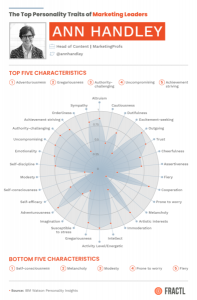As retailers prep for the busiest time of year, columnist Jason Warnock takes a look at innovations and technologies that will transform the digital retail space this holiday season and beyond.
 One of the things I love about my job is that marketing is constantly evolving. Just when you think you have mastered the latest tools and strategies, a whole new generation of technologies emerges, creating opportunities for marketers to take their work in exciting directions.
One of the things I love about my job is that marketing is constantly evolving. Just when you think you have mastered the latest tools and strategies, a whole new generation of technologies emerges, creating opportunities for marketers to take their work in exciting directions.
Last month, a group of my colleagues attended Shop.org, one of the biggest gatherings of digital retail professionals on the planet. As always, this year’s event introduced us to new approaches and technologies, showed continued movement on trends that are changing the digital retail space and enabled us to think about how all types of marketers view digital retail. As we head into the holidays, the busiest time of year for retailers, it’s important to keep on the lookout for some of these trends and technologies we saw at Shop.org.
Not surprisingly, the relationship between technology and marketing continues to take center stage in digital retail. Forward-thinking marketers are tapping into the latest consumer technology trends to create more meaningful and personalized experiences for shoppers. Here are the four trends in retail marketing technology that I’m most excited to see develop in the coming months:
1. Virtual Reality (VR)
The VR concept has been around for a while, and many have talked about its potential marketing capabilities. But over the past year, with the popularity of the Oculus Rift and other devices, it’s started to gain traction with consumers, and it’s rapidly becoming one of the hottest tickets in town.
And we can’t fail to mention the Pokémon Go craze of the summer that popularized augmented reality (AR). VR and AR revenue is projected to reach $120 billion by 2020, according to Digi-Capital.
Marketers are getting on board with VR/AR and are developing practical applications for the retail space. By combining the latest VR/AR technologies with in-store and online shopping behaviors, tech-friendly marketers intend to provide immersive experiences that enable consumers and B2B buyers to interact with products and brands in ways that go far beyond even the most impressive 2-D digital opportunities.
2. Visual feedback
Customer feedback and reviews are a mainstay of digital marketing. We’ve already seen a trend toward increased demand for visual content, with users preferring to consume videos and images rather than text. Now we’re seeing increased demand for visual feedback — the integration of visual content with traditional customer reviews.
The push for visual feedback makes sense. Given consumer preferences for videos and still images, it’s only logical that visual reviews of products and services are more effective than written reviews. After all, who wants to read a 1,000-word article when they could watch a 30-second video about a topic?
Digestible content is key to staying above the noise in today’s oversaturated world. The challenge for marketers is to provide opportunities for customers to contextualize their experience by sharing images and videos of products rather than simply asking customers to rate products on a five-star scale.
3. People trust people
At this year’s Shop.org event, there was a heavy emphasis on the “people trust people” concept. This seems counterintuitive to the sudden spike in robot conversation we’ve seen over the last few months. But in reality, this concept aligns with the artificial intelligence conversation weighing the pros and cons of machines replacing humans.
Research consistently shows that people trust and react to a human review or comment much better than a slogan, brand statement or shared message. As a result, brands need to put people front and center in their marketing messages, preferably in a way that takes advantage of new technologies and channels such as artificial intelligence.
“People trust people” extends beyond machines. It’s also about incentivizing the creation of more user-generated content and encouraging customers to share the feedback they have created with their connections. Essentially, marketers ought to leverage the trust customers have already established with other people to make a deeper impact with new audiences.
4. In-store personalization
Multichannel isn’t new. It’s a buzzword that has lingered around the world of digital retail for years. But what’s new is the way that big retail brands are reimagining multichannel to create consistent and highly personalized experiences for shoppers.
For example, JCPenney is working to marry the in-store and digital experience by creating more in-store personalization for brick-and-mortar customers who also shop online. The result is a highly consistent and more seamless customer experience that’s tailored to the customer’s unique needs and preferences.
Keeping with the multichannel trend, marketing activities can no longer be siloed. Customers communicate with brands on an array of channels, and marketers need to speak with each customer in a way that makes the most sense for each individual.
And maybe that’s the most important takeaway about what seems to be happening right now in digital retail. Over the past several years, marketers have changed the way they approach communicating with customers. No longer are they blasting brand-centric messages to a large audience. Instead, we’ve figured out how to communicate with our customers in a more personalized way based on everything from their demographics to purchase history and more.
Now, marketers are using new technologies to create innovative, personalized, and sometimes even immersive experiences for shoppers. The next step in personalized communication is using technology to become even more customized.
Some opinions expressed in this article may be those of a guest author and not necessarily Marketing Land. Staff authors are listed here.
Marketing Land – Internet Marketing News, Strategies & Tips
(75)








